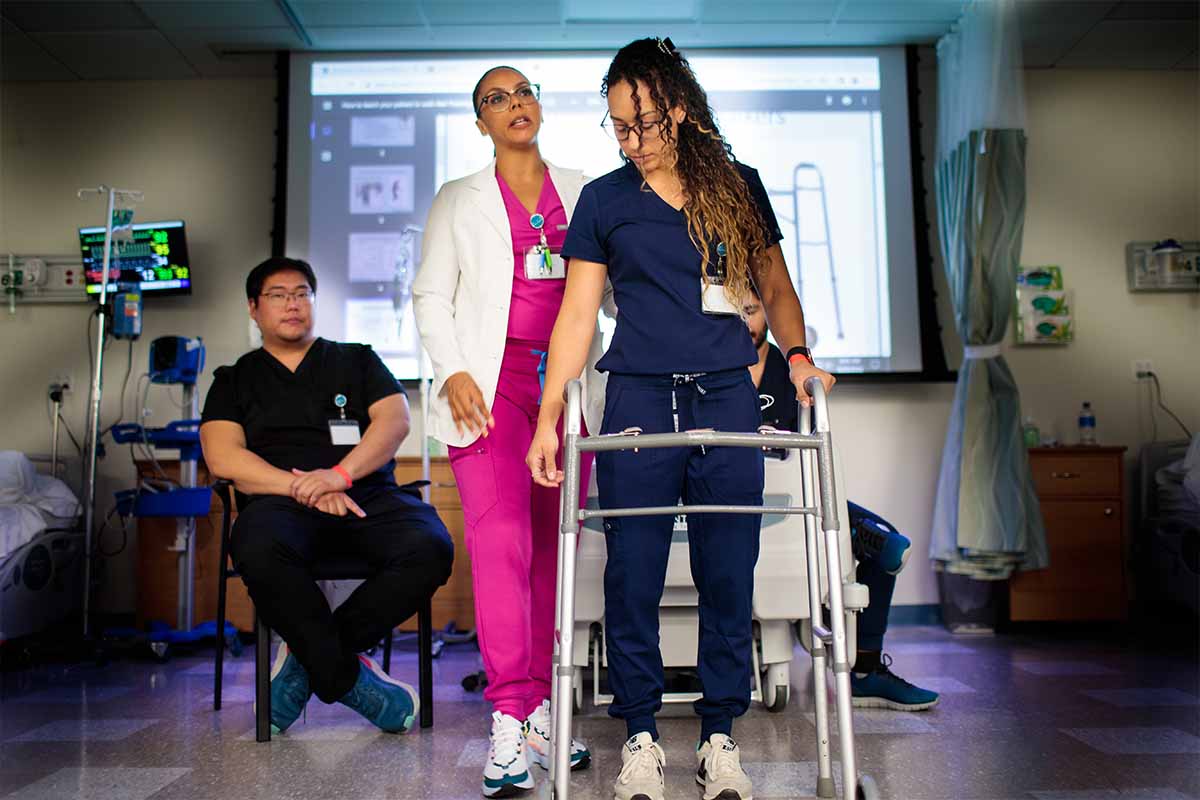
A post-graduate education is a great way to enhance your career prospects, especially in the field of health sciences. But there are many things to consider before taking the plunge, not least of all the financial cost of pursuing a graduate program. Of course, not all programs are designed equally, and when you settle on a few that align most closely with your studying preferences and professional goals, it would be helpful to compare their value side by side.
Tuition and fees are important to look at and compare, but it’s the total cost of spending x number of years as a student that will have the largest financial influence on the college you eventually decide to attend. As most people are on a budget of some kind, calculating the cost of the investment, the enhancement to your future career and the potential future earnings deserves careful attention and consideration, especially in the case of graduate school.
It’s equally important to pay attention to the quality of the education and the services that one institution offers over another when making a comparison.
While tuition might initially appear to be more costly, the services that are offered may more than make up for the cost differences and prove to be much more valuable to you by saving you time, being flexible or offering ways to accelerate your journey. Be sure to compare apples to apples and include some of the soft services that may be of tremendous value.
Colleges publish the cost of fixed expenses such as tuition, program fees and other direct expenses for things like books and lab fees each year, but that is just part of the picture for most students. If you’re leaving home and moving to a new city, other variable expenses such as housing and food, transportation and health coverage need to be factored in too. And, of course, those things are variable in infinite ways: the cost of living in the city of the institution, the availability of different types of transportation, costs and availability of healthcare, to name a few. A detailed look at your personal lifestyle needs to be part of the equation as well if you want a realistic estimate of your costs. Do you need a Starbucks coffee to get going every day? Do you only eat organic foods and shop at farmer’s markets? Are you a great home cook or do you eat out? Is the cost of renting a home or apartment comparable with what you’ve been paying, or will there be a step up—or even down—in cost?
It’s worth spending some time carefully examining the costs and making some comparisons between the way you currently live and how you will live and what you can afford for the duration of the college program, with some realistic expectations about your future earnings and ability to pay back any loans or debts incurred over the course of your student life.
Add It All Up
To start with, look at the tuition, fees and expenses of the programs you’re considering and make an overall calculation of the true cost of the graduate degree. Multiply the per-trimester/semester tuition, fees and direct costs by the total number of trimesters/semesters. Compare costs per credit hour, if applicable. Keep in mind that some courses might appear to be pricier than others, but, in fact, they take less time to complete, meaning you’ll be entering the workforce sooner—so you can reduce costs by an additional trimester or year on things like living expenses such as housing and food.
Then look at the number of credit hours required for the program. Does this require you to be a full-time student with no extra time for part-time work? Or do you think you can, or perhaps you intend to, supplement your costs with some income?
Once you have an idea of your overall costs, you’ll be in a better position to compare different degrees, colleges and even living situations. Here’s some data on the cost of living in various U.S. regions and cities—location matters. For instance, USAHS has college campuses in five cities: San Marcos, California; St. Augustine and Miami, Florida; Austin and Dallas, Texas. Each city has a different cost of living, as you can see from the figures we provide to help you determine your cost of attendance (COA).


Compare Course Offerings
You probably have a general idea of where you want to be heading, career-wise. Advanced degrees are often further divided into specific areas of interest. Be sure to check the programs being offered to see which institution aligns with your advanced education goals. You don’t want to make an expensive mistake. Each college’s website should have complete listings of the programs offered and the individual course curriculums. You can find a sample of what USAHS has to offer here.
Financial Aid and Scholarships
Now that you’ve figured out general costs and what you want to study, taking a really close look at what kind of financial aid you can get is as important as figuring out how much you will spend. There is aid for advanced degrees and there are scholarships as well!
While filling out your FAFSA application for federal aid is key, it’s only part of the picture. Some colleges may offer generous financial aid or have scholarships that apply to your particular situation. At USAHS, for example, we provide tuition reductions for some programs as well as offer financial aid and scholarships in certain situations. Be sure to check out all of your options and go from there.
What is your capacity to take on a loan? Is that better for you than working part-time? It may well be worth the investment. In some cases, prospective students may find that their families are eager to help support their continuing education.
Check out other sources of funding, such as local, regional and national scholarships—there are several websites that list scholarships and grants for graduate healthcare programs (e.g., fastweb, EduMed.org and bold.org). Nurses can find a list of grants and scholarships through the American Association of Nurse Practitioners (AANP). There are scholarships for everything, if you’re prepared to invest the time to research and apply for them. If you’re currently employed, you may be able access some funds from your employer to help fund your graduate degree. Some colleges offer tuition aid for alumni that can help toward the cost of an advanced education.
External sources of funding provide a way to really move the meter, and can be helpful if, for example, you’ve found a course that you feel is right for you, but maybe is a little costlier than others, or is in a city with a higher cost of living than your current situation.
Advancing your education is a big step, so the more prepared you are, the better. Reach out to the institution if you have questions, no matter how trivial they seem. We encourage you to read our Financial Aid FAQs where you can also schedule an appointment with a financial aid advisor.
Good luck with your search. We’re excited for your education journey!








